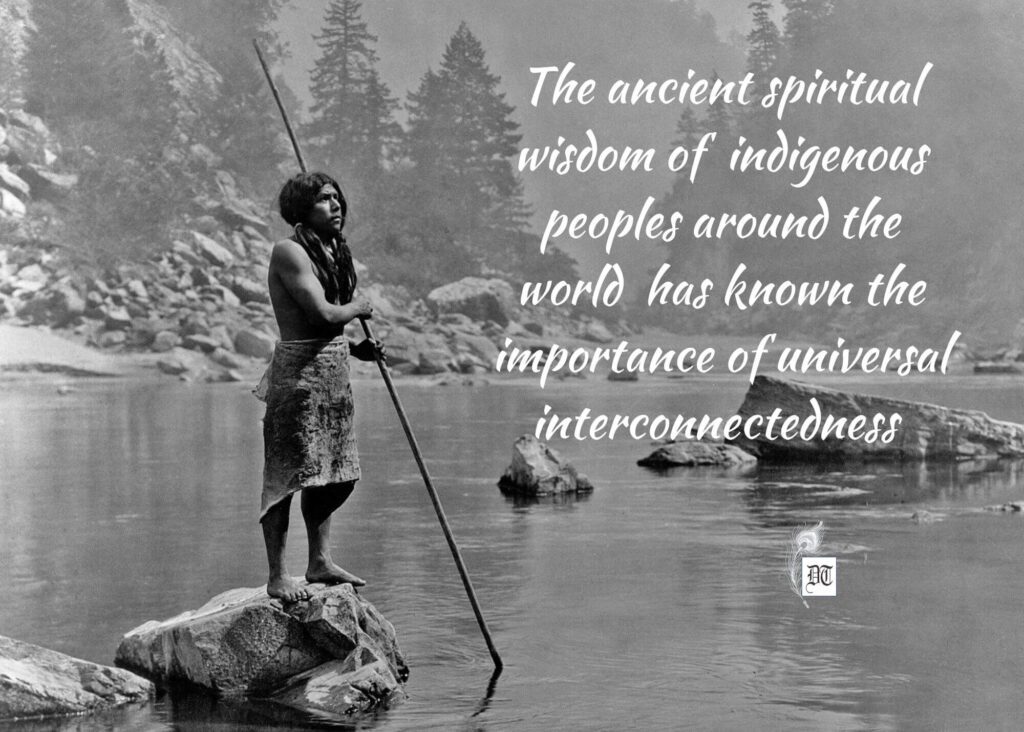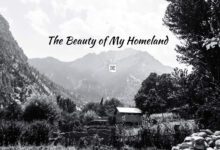Our columnist, Shernaz finds an interconnectedness in various aspects of life. We are not just interconnected, we are interdependent and to take it further ‘we inter-are’, ‘interbeings’ as the beloved Vietnamese monk, Thich Nhat Hanh or simply Thây, teaches us. It means that we would not ‘be’ without the ‘others’ and that ‘others’ includes the whole cosmos. She visits some of the books she read and music she heard, in the weekly column, exclusively in Different Truths. A must read.
My mid-morning cup of green tea, an infusion of two distinct kinds of leaves, connects me to Taiwan and Munnar in India. Through this pale gold brew, I imbibe the culture, weather, sun, rain and soil; growth and production techniques of perhaps more than two countries; the effort of countless people and with gratitude, the undeniable warmth and amazement that such associations bring. Nothing and no one can exist in isolation. It is through our perceptions that we fragment the entirety of life and the Universe.
We are not just interconnected, we are interdependent and to take it further ‘we inter-are’, ‘interbeings’ as the beloved Vietnamese monk, Thich Nhat Hanh or simply Thây, teaches us. It means that we would not ‘be’ without the ‘others’ and that ‘others’ includes the whole cosmos.
In one of his beautiful meditations —The Sun My Heart—he elaborates the innate oneness of all with a sheet of white paper. He details all the different causes and conditions that would have gone into its composition – the sunshine, clouds, rain, tree, the Earth, the logger, the farmer who grew the grain that went into the bread the logger ate…all these non-paper elements make up the true nature of the paper, and so they all ‘inter-are’. And that makes us ‘interbeings’. He states further that from a pebble resting at the bottom of the ocean, to the movement of a galaxy millions of light years away, we are intimately linked to every phenomenon in the universe.
What does science say?
What does science say? Decades back I had read Fritjof Capra’s The Tao of Physics. The 1975 book explores parallels between Eastern Mysticism and the shifting paradigms of modern physics. He says: “The parallels to modern physics [with mysticism] appear not only in the Vedas of Hinduism, in the I Ching, or in the Buddhist sutras, but also in the fragments of Heraclitus, in the Sufism of Ibn Arabi, or in the teachings of the Yaqui sorcerer Don Juan.”
Drawing from the same source:
“The Eastern mystics see the universe as an inseparable web, whose interconnections are dynamic and not static. The cosmic web is alive; it moves and grows and changes continually. Modern physics, too, has come to conceive of the universe as such a web of relations and, like Eastern mysticism, has recognised that this web is intrinsically dynamic. The dynamic aspect of matter arises in quantum theory as a consequence of the wave-nature of subatomic particles and is even more essential in relativity theory, where the unification of space and time implies that the being of matter cannot be separated from its activity. The properties of subatomic particles can therefore only be understood in a dynamic context; in terms of movement, interaction, and transformation.”
He imparts a significant and ageless message to us: “Physicists do not need mysticism and mystics do not need physics, but humanity needs both.” Because humanity and the cosmos are one vibrant network where physics and mysticism converge and diverge but are still parts of the whole, both seeking the One Reality in their own ways. Mankind needs the knowledge of one and the wisdom of the other to comprehend the enormity and magnificence of this wondrous intricacy.
… it invites us to pay deferential respect to the miraculous wonder that is our body and the priceless gift of good health.
Another book I read two years back, which validates this fact, absolutely blew my mind away. The Survival of the Sickest. You got it right. This is the title and it is a book written by Dr. Sharon Moalem and Jonathan Prince. It is an amazingly transformational book! It takes us on “a magical, medical mystery tour” where we become Alice in the wonderland of biological evolution. It addresses and answers staggering questions, igniting our minds with astounding speculations and further queries. The book offers an almost philosophical and reverential view of health, edifying the inter-connectedness and the interdependence of the tiniest living organisms, to the biggest on this earth; it invites us to pay deferential respect to the miraculous wonder that is our body and the priceless gift of good health.
Chapter 5, Microbes and Men mesmerised me most. It was an incredible jaunt into some chic scheming methods devised by viruses and bacteria! It is beyond belief to read how microorganisms actually control the hosts (human included) they inhabit!
“Your digestive system is a veritable jungle, with hundreds of species of bacteria competing for survival — most of them working with you, but the rest of them ready to work against you if they have a chance. When the relationship between an organism and the host it inhabits, is mutually beneficial – as is generally the case with humans and intestinal bacteria – it’s called symbiotic. Often, of course, that is not the case. The Guinea worm is a pure parasite; it lives off its human host for its own benefit; providing nothing, causing only harm. And when its victim feels the natural urge to plunge the sores the worm causes into cool water (and thus help the worms to spread), the infected person is experiencing a kind of host manipulation — the phenomenon that occurs when a parasite provokes its host to behave in a way that helps the parasite to survive and reproduce.
“Nature abounds with examples of host manipulation; generally – no big surprise here – they involve a critical step in the parasite’s efforts to reproduce.”
This tiny worm’s survival tactics need to be saluted!
Both, the so-called diversity and unity of life are determined by the process of evolution. We learn how a parasitic wasp manipulates the behaviour of its host – a spider; how a tiny worm that lives in a sheep’s liver has a very vexatious problem of transportation when the host dies and it has to find another sheep’s liver. This tiny worm’s survival tactics need to be saluted!
Having read this book, I am inclined to believe that we humans are not the only intelligent species on this earth. I imagine we are all afloat in a massive womb of intelligence and each one draws forth from it according to personal capacity and need.
In A Conversation with Sharon Moalem, asked why he wrote this book (p.7), the author says, “One of the reasons I wanted to write this book was to get people to step back and ask some basic questions pertaining to the origins of disease. This can only be done once you acknowledge the true degree of interconnectedness of life on earth…” This is biological interconnectedness. Science also talks of chemical and atomic interconnections.
Science and music intersect[i] gifting us some captivating, must-watch videos on YouTube. Featuring well-known personalities like Neil deGrasse Tyson, Richard Feynman, Carl Sagan, Jane Goodall, David Attenborough, Morgan Freeman, Stephen Hawking etc., the emphasis here also is the connection we all have to one another.
In their song: We are all Connected, Tyson sings:
We are all connected;/To each other, biologically
To the earth, chemically/To the rest of the universe atomically-
Further down, he goes on:
I know that the molecules in my body are traceable/To phenomena in the cosmos
That makes me want to grab people in the street/And say, have you heard this??
In another video titled, We are Star Dust, Lawrence Krauss croons:
Every atom in your body/Came from a star that exploded
You are all stardust/From a star that exploded
Carl Sagan explains (We are all Connected) that
The beauty of a living thing is not the atoms that go into it
But the way those atoms are put together
That explains the seeming disparity between all forms. The atoms are the same, their formation is different.

The ancient spiritual wisdom of indigenous peoples around the world has known the importance of universal interconnectedness and the need for its continuance. Native American myths stress on the affinity and unity of all creation. This is evident in their great reverence for nature – flora, fauna, water bodies…though it is labelled as blind worship arising out of fear, and it is in truth veneration of life in all its connected forms.
Native American beliefs, here too, the oneness of people, plants, animals, landforms, heavens, and earth…
Central to Aboriginal Spirituality is again the interrelatedness of animate and inanimate objects in creation. As in Native American beliefs, here too, the oneness of people, plants, animals, landforms, heavens, and earth is not only treasured but through them we are inspired to sustain healthy communities, ecosystems and a sustainable culture because they knew all along that exploitation of any one species meant abuse of the whole.
All present day religions also exhort reverence for the elements of nature but somewhere down the ages, pseudo-scientific, forward thinking people, derided it as superstition; and some over-zealous adherents have gone too far in their unrestrained worship and rites, adding to the pillage and pollution of Mother Earth, advancing the odds of our own destruction in the process.
Common sense, not intelligence, is enough to understand that it is our sacred duty to preserve this unity; that it is in the interest of evolution to let things ‘be’ rather than try to control them. The sooner we recognize that we are neither the centre of the universe nor the pompously self-defined ‘exceptional’ creatures, the better for us.
Microorganisms we are not aware of, control and manipulate our bodies and all our biological systems. They are also composed of stardust like we are and in the gigantic scheme of existence, we are specks, comparatively as tiny or tinier than the organisms that inhabit us. We are the cosmos to them and we are the microorganisms of the cosmos. This knowledge is seriously humbling; we must put an end to the mayhem we indulge in due to our arrogantly self-imposed domination of the universe.
Photos design Anumita Roy, Different Truths
[i] http://www.symphonyofscience.com





 By
By


 By
By
A wonderful write-up, Shernaz. We are inter-subjective in every which way. Mystics, as you have written, have always emphasized the interconnectedness of all life. Thinkers like Levinas emphasize that the ‘other’ is within us and hence, our ethical responsibility has to be oriented towards the other and not to the self. Even science now suggests that our very bodies are dependent on most elementary functions on the trillions of viruses and bacteria who are integral to our physical make up. However, the consumerist ethos which survives on fanning narcissism and pathological preoccupation with one’s own self has become a powerful ideology that subverts all philosophies of self-denial, togetherness and social solidarity.
While going through your beautiful, meditative essay, I was reminded of Fritz of Capra’s other two important books “The Turning Point” and “Web of Life”, Whitman’s “Song of Myself”, Ed Yong’s “I Contain Multitudes” and Rutger Bregman’s “Humankind: A Hopeful History”. Your plea for interconnectedness is extremely relevant in these times when the shenanigans of political demagogues have driven wedges into our minds against the imaginary/perceived ‘other’.
Just loved going through this piece; it brought peace to my mind. Such sanity is getting rarer by the day.
Your beautifully articulated and enriching comment has made the effort of writing this essay worthwhile. Swaraj, it has made me very happy to know that the piece brought you peace of mind. There is little more I can ask for. Before I start writing, I pray to the Universe and Ma Saraswati for guidance.so that my words bring peace, light, comfort to at least one soul who reads them. I do not write for accolades or to preach; I write with the thought that somewhere, someone will be touched by my words and be happy for having read them.
I will look up Web of Life and buy the kindle edition if it is available. Perhaps even the other titles as I haven’t read them. Thank you for sharing them here. And immense gratitude for your lovely feedback. I read it just today and you have no idea how much it has motivated me. Maybe I should submit more often to Different Truths. Through this journal I have found a like-minded friend like you.